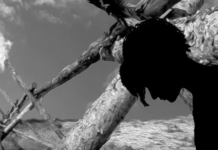Creative Medium: Writing (poetry, short stories, screenplays, etc.)
The last poem I wrote, When My Words Left Me, was a soliloquy in verse form, written from the point of view of a poet who was unable to write. Funnily enough, a lot of what I write deals with writer’s block, so I am no stranger to the anguish that comes along with it.
To come up with ideas, the first thing you need to do is figure out what inspires you. Inspiration can come from anywhere — from our own daily experiences to the conversations we have with others. I have found that I am often inspired to write when I read, listen to, or watch something I really enjoy. More often than not, it isn’t even inspiration in terms of content, but rather in terms of the quality that I want to strive for.
While a good book or a movie is an amazing source of inspiration, I have found that nothing beats listening to quality music. I have a playlist called “My Muse” with songs from artists like Taylor Swift, Halsey, When Chai Met Toast, Prateek Kuhad and others whose songwriting skills inspire me. Some time back, I noticed that some of my best ideas come to me when I am listening to music, and because of this, I have made it a ritual to listen to music before I sit down to write.
In my experience, ideas never come all at once or in a linear manner. Sometimes, I think of a character and that’s all I need to begin a story. Other times, I begin with world-building. I wrote a story last year, Incomplete?, and the first thing I wrote for that was the ending. At that time, I did not know my characters, their experiences or where they started from. All I knew was where they would end up. The same is true for poetry as well. Sometimes all I begin with is a line or two of verse, and then I go where the pen takes me. It doesn’t even need to be the beginning of the poem. As a matter of fact, most times it isn’t.
When I finally get down to writing, I have just one rule for the first draft — leave editing for later, rather than editing on the go. As I mentioned earlier, ideas come to me in a non-linear manner, so that’s how I write my first draft as well. While doing this, I don’t let restrictions like word limits, using “appropriate” language or structure stop me. The first thing to do is to get all the ideas on paper. Then I start structuring, putting my ideas in a somewhat comprehensible order and connecting them as needed. Once the story or poem is structured, I read it a few times and edit it. Once I am done with the first edit, I just try and forget about it. I start working on something else before I come back to it. If possible, I try to not touch it for at least a week. When I get back to it, I usually don’t come back to the amazing piece I remembered writing, but rather a terrible one in need of refining. That week that I spend away from the piece help me come back to it and look at it, not as its writer but as a reader and an editor. From there, it’s just a lot of editing, with breaks to listen to my “My Muse” playlist for much needed inspiration, until I am ready to share my work with the world.
Almost always, some ideas end up on the cutting room floor, because they don’t fit in with the larger piece that I end up writing. As someone who believes that no idea is bad, I take all of these and write them out in my “Ideas Diary.” I don’t worry much about how I would use these ideas because inspiration can strike at any time.
If you are an artist who would like to share your creative process for “From idea to creation,” please contact arts@uwimprint.ca and assistantartseditor@uwimprint.ca.
































